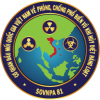CRISPR-Cas9 and the Risk of Bioweapon Proliferation
CRISPR-Cas9 is an advanced gene-editing technology developed in 2012 by scientists Jennifer Doudna and Emmanuelle Charpentier. It is a natural defense system found in bacteria and archaea, helping them resist viral attacks by “memorizing” viral DNA segments and integrating them into the bacterial genome. This system then uses this information to identify and destroy viral DNA upon subsequent attacks.
CRISPR-Cas9 operates by “cutting” or “editing” DNA sequences at specific locations. Technology employs a “guide RNA” to direct Cas9, a DNA-cutting enzyme, to the precise site scientists wish to modify. As a result, genes can be deleted, replaced, or added, enabling precise genetic alterations. This breakthrough has vast applications in research, treating genetic disorders, improving crop varieties, and developing new therapies for various diseases.
Applications for CRISPR-Cas9
CRISPR-Cas9 has driven significant advancements in multiple scientific fields, including:
– Medicine: The technology has been used to correct disease-causing genetic mutations, such as those responsible for thalassemia, sickle cell disease, and even cancer treatment research.
– Agriculture: CRISPR can create drought-resistant, disease-resistant, or higher-yield crops without relying on traditional genetic or chemical methods.
– Molecular Biology: CRISPR helps scientists study genes and better understand fundamental physiological processes.
Risks of CRISPR-Cas9: Misuse and Bioweapon Development
Despite its potential, CRISPR-Cas9 raises serious concerns about misuse for malicious purposes, particularly in developing bioweapons.
Gene Editing for Bioweapon Development: Technologies like CRISPR could be exploited to create organisms harmful to humans, animals, or plants. Terrorist groups or hostile nations might engineer deadly microbial strains, viruses, or toxins. These organisms could be designed to:
– Create rapidly spreading, lethal viruses: For example, CRISPR could modify viruses to resist existing vaccines or spread quickly through populations.
– Produce antibiotic-resistant bacteria: Engineered bacteria could defy antibiotics, posing severe threats in biological warfare and causing uncontrollable outbreaks.
– Develop potent biotoxins: CRISPR could synthesize powerful toxins like botulinum or ricin for use in terrorist attacks or biowarfare.
Design unprecedented “weaponized organisms”: One of the greatest dangers is CRISPR’s ability to “create” entirely new pathogens, unlike any natural counterparts. These synthetic organisms could interact unpredictably with ecosystems, posing risks to humanity, global economies, and biodiversity.
Proliferation and Lack of Oversight
Another issue is CRISPR-Cas9’s increasing accessibility. Gene-editing tools are becoming cheaper and easier to use, available not only in large labs but also to small research facilities or even individuals. This raises concerns about unethical misuse by rogue actors or groups.
Terrorist organizations could exploit CRISPR to engineer pandemic-capable organisms, akin to science fiction scenarios. The unchecked development of this technology threatens not just individual nations but global security.
Mitigation Strategies
To counter CRISPR-Cas9’s bioweapon risks, strict measures are needed from governments, the scientific community, and international bodies:
– Regulation and Oversight: Nations and global organizations must establish stringent rules to monitor CRISPR use. Research entities must adhere to safety and ethical guidelines. Agencies like the WHO and UN should enforce oversight and provide clear directives.
– Enhanced Biosecurity: Strengthened biosecurity measures are essential to protect labs from threats. New technologies must undergo rigorous testing before deployment, with protocols to detect and contain outbreaks.
– Ethical Education: Scientists must understand gene editing’s implications. Training programs on research ethics can ensure CRISPR is used constructively.
– Global Cooperation: International collaboration is vital to create legal frameworks and share biotech data. Treaties like the Biological Weapons Convention (BWC) must be reinforced to prevent military misuse.
CRISPR-Cas9 holds immense promises for improving health and solving agricultural challenges. However, its rapid advancement also poses significant bioweapon risks. Responsible and ethical use requires coordinated efforts among nations, scientists, and global institutions to prevent misuse and safeguard global security.
References:
- Doudna, J.A., & Charpentier, E. (2012). “The new frontier of genome engineering with CRISPR-Cas9.” Science, 337(6096), 816-821.
- Fitzgerald, E. (2017). “Biotechnology and Biological Weapons: The Threat of ‘Bioterrorism’.” Global Bioethics Initiative Report.
- Zhang, F., et al. (2020). “Potential applications and threats of CRISPR-Cas9 in biosecurity.” Nature Reviews Microbiology, 18(7), 422-435.
- Sadeghian, M., et al. (2019). “The role of gene editing in the development of biological weapons.” Journal of Bioterrorism & Biodefense, 10(1), 2-9. DOI: 10.4172/2157-2526.1000234.
- The Biological Weapons Convention (BWC). “The Biological Weapons Convention: Review of Compliance Mechanisms and the Role of International Cooperation.” United Nations (2019).
Nguyễn Văn Vương (dịch)






